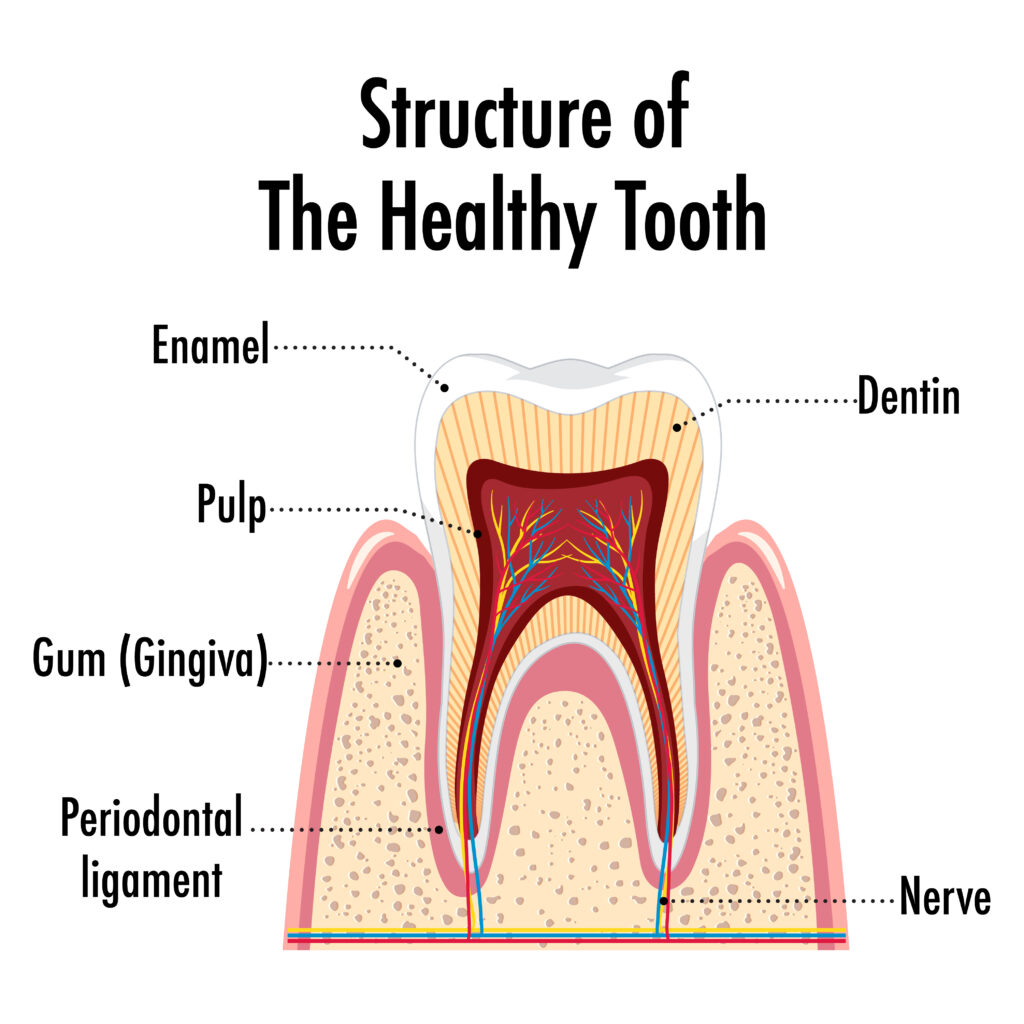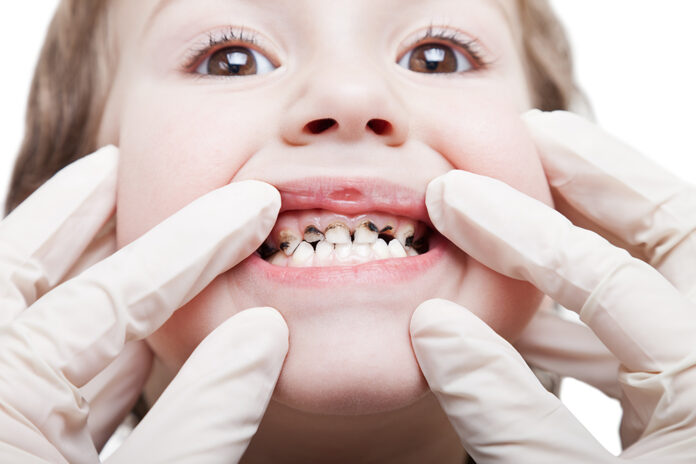This post is also available in: English
Teeth start forming when the baby is in the mother’s womb. During this phase the mother’s diet provides the needed nutrients to form the teeth and develop the jaws. Once the tooth erupts in the baby’s mouth it needs to be cleaned to ensure it stays cavity free.
What are teeth made of?

Teeth are made up of layers which are structured to protect themselves. The outermost layer (enamel) is the strongest part of the tooth.
The layer following the enamel is the dentin which is the storehouse of the tooth’s nerve ends and contains dentinal fluid. The inner most layer of a tooth is called the pulp. This works as the heart of the tooth and is protected by the dentin and enamel. The tooth is affected by what the child eats and needs to be kept clean to stay strong. An imbalance in any of these can spoil the tooth.
What is dental decay or cavities in babies?
Dental decay or cavities are very common in children. These can be seen in children as early as 15-19 months of age. One of the biggest reasons for tooth decay is zero tooth cleaning after eating. Cleaning the mouth after feeding a baby, toddler or a 4 year old is important. Food staying on in the mouth can result in tooth decay.
What causes cavities?
An increase in snacking on sticky sugary foods will spoil the enamel (the outermost layer of the tooth). This will cause small holes which are called cavities.
Once this starts, it’s only a matter of time that the deeper parts of the tooth (dentin and pulp) are reached. This stage can be painful for the child and can cause fever, swelling and make the child stop eating and sleeping.
If cavities aren’t stopped with proper treatment they turn into pulpal inflammation called as pulpitis.
Small holes or dental cavities can be treated by simple cleaning of the teeth followed by filling it with a white tooth material.
However, these cavities when left untreated make way into the tooth’s inner layers. This will then need pulp therapy (pulpectomy). This is similar to what adults face as root canal treatment. Though in children the instruments, materials and techniques used are different.
What is a root canal treatment for milk teeth?

The root canal treatment of milk teeth does not affect the developing permanent tooth. The materials used are safe for the child and keep the tooth in the mouth till it’s ready to fall and allow the permanent tooth to erupt.
Milk teeth are natural space maintainers that keep the space available till the permanent teeth erupt.
Milk teeth also play an important role in the development of the face and even play a role in how the child speaks. Loss of milk teeth early can change the jaw size and shape and can change the way the permanent teeth come into the mouth.
With the advancement of dental medicine it takes only 5-7 minutes to fill a cavity. Modern technology helps treat deep tooth infections with precision, enabling pediatric dentists to save milk teeth from falling off early. It is advised to visit a pediatric dentist to get a thorough understanding of your child’s oral health. Treating cavities early enables kids to have strong teeth and bright smiles.
By
Dr. Ipshita Suyash
BDS,MDS
Paediatric dentist, myofunctional & tongue tie expert
Dr. Ipshita Suyash (MDS) is a holistic paediatric and preventive dentist. She’s not the regular drill fill dentist; as she provides a holistic approach to child’s health. Her expertise in myofunctional therapy and tethered tissue release help kids eat, sleep and breathe better.

This post is also available in: English










